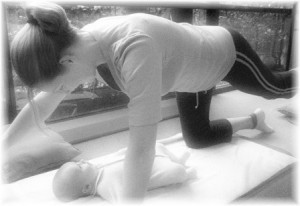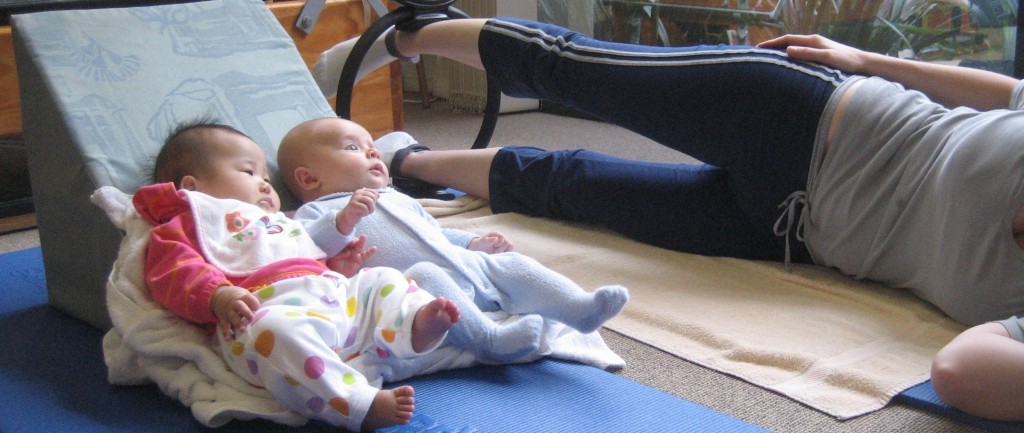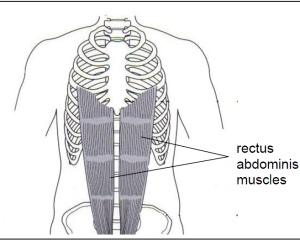 What a great way to start the new year…bulging tummies!
What a great way to start the new year…bulging tummies!
During your pregnancy you may develop stretching and separation of the middle part of your tummy muscles. This ‘linea alba’ holds together the outermost rectus abdominius muscles (six pack), internal and external obliques, and the fascia of the transverse abdominus. You can do exercises during your pregnancy and ‘lifestyle ‘changes to minimise this. It doesn’t happen to everybody.
How to tell: and what to do if you have a DRA (diastasis):
Lie on the floor on your back with your knees bent. Place your hand flat on your belly, fingers pointing towards your toes. Fingers should be flat on your belly. Check in three places– belly button, two inches above belly button, and also below. To check; you press your fingers down as you lift your head. Shoulders stay down. If you feel a space that you can press at least one to two finger into then that is a diastasis. The wider this space, the worse the diastasis. It may bulge or even pulse as the underlying tissue is very thin. A diastasis can be caused by pregnancy/childbirth, but also by doing too many stomach-strengthening exercises (sit- ups / crunches) without also strengthening the deep transverse abdominal muscle that supports your internal organs and growing baby. Men can also get DRA
You may need a support belt.
What NOT to do if you have a DRA :
Don’t do Pilates mat classes or DVD’s at home. You may do a specialized studio Pilates programme where you are working 1:1 or in a very small group . Get your belly assessed by a Women’s Health Physio first and she will help you with a safe exercise programme.
Don’t brace and bear down or strain…this will increase the pressure inside your tummy and in the effort to hold your tummy in strongly you will be putting too much pressure on your pelvic floor.
Most of the Pilates mat class exercises that you can do at your local gym or at a ‘boot camp’ will not only not help your mummy tummy, they may make it worse, or even create a diastasis where there was none before. When your diastasis starts to heal, you can do certain exercises which are designed to help your DRA, but not crunches or sit- ups..Make sure your Women’s Health Physio talks to your Personal trainer or Pilates teacher… This is how we spread the word….
DRA from the front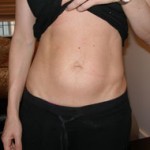
What TO do: When doing these exercises make sure you can feel your Pelvic floor lift
Do belly breathing. When you breathe, feel your lower belly expand, and when you exhale, let your lower tummy come all the way back. Do not forcefully push your upper abdomen out while doing belly breathing.
Do Practice perfect posture as much as possible. Squat or bend at the knees to lift things or babies.
Carry your baby as close as possible and try to maintain good posture when you do!!! When breastfeeding, don’t slouch to get breast to baby. Prop baby higher with pillows, or lie down next to baby to feed.
Do abdominal work:
Deep tummy (Transverse abdominal muscle) is the start, together with pelvic floor lift. A range of side lying ,kneeling on hands and knees ,sitting and standing exercises can be taught with this deep bracing support.
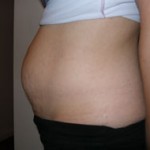 Seated Tupler Technique While breastfeeding, remember good supported posture pillow(s) under baby, bring him/her up to you, rather than bringing your breast down to them,
Seated Tupler Technique While breastfeeding, remember good supported posture pillow(s) under baby, bring him/her up to you, rather than bringing your breast down to them,
Place your hands on your tummy, one above the belly button, one below. Take a belly breath and expand tummy to floor one. (Floor 1 is all the way out, floor 5 feels like your tummy is touching your spine), Hold for 30 counts but count out loud so you know you’re still breathing. Then pull your tummy back even further for a little squeeze, and count as you do 5 of these squeezes, and release make sure you relax. Feel your side waist drawing in too. Do 5 sets of these every day and don’t forget your pelvic floor lift first…and breathing….
Courtesy of http://diastasisrehab.com/before-after.html
Check yourself and then check with your Women’s Health Physio to get the right exercise level,reps and sets..get to it!
